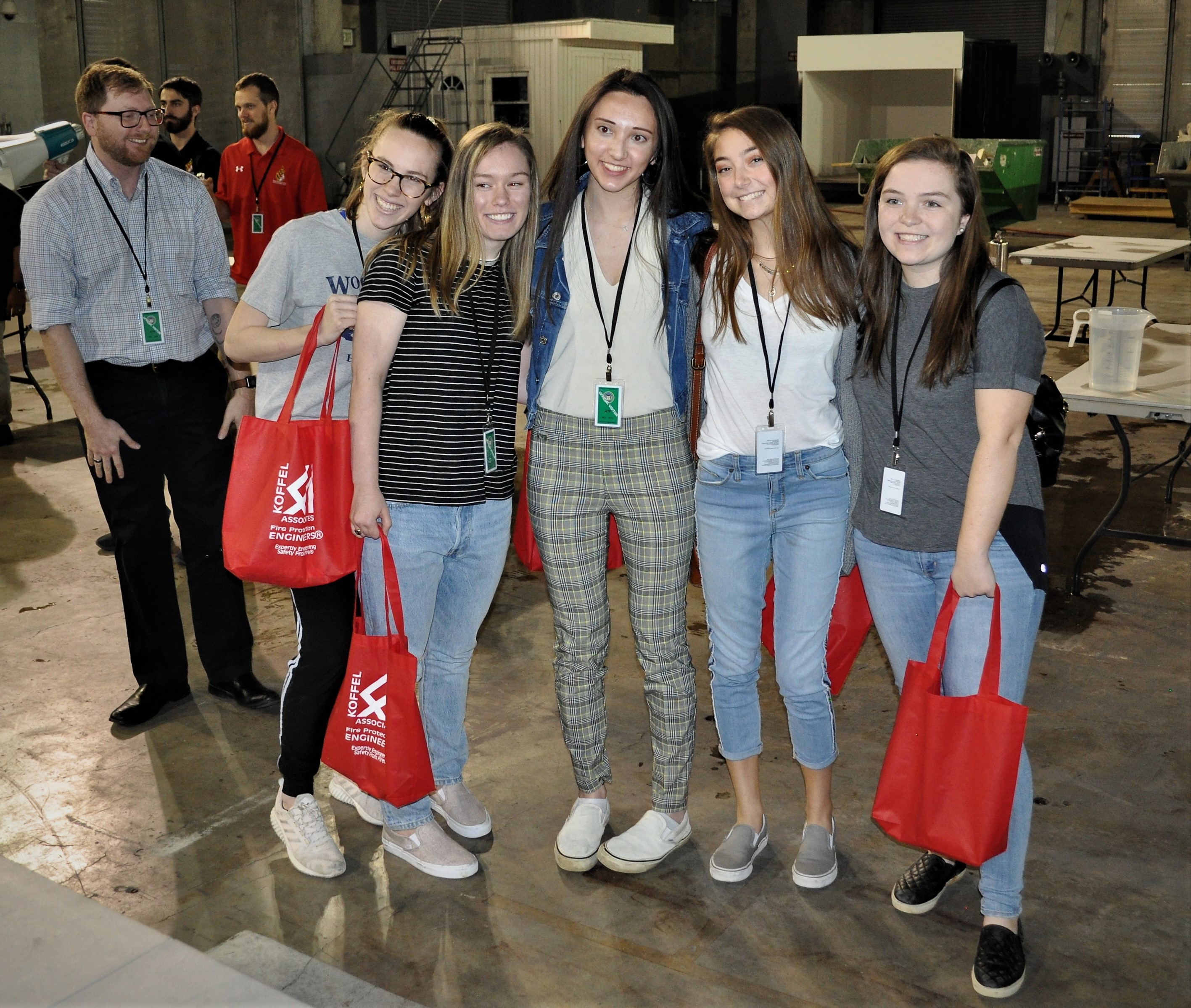News Story
High School Students Present Fire Suppression Designs in Annual UMD Event

From left to right: Mae Smith, Malina Beideman, Sophie Averza, Olivia Fuselier and Liz Akers.
On April 10th, the University of Maryland (UMD) Department of Fire Protection Engineering (FPE) held its annual Design Challenge (FPEDC) for the 5th year in a row.
FPEDC is a one-of-a-kind competition open to high school students across Maryland, Washington, D.C. and Virginia. It involves the design, construction, and (burn) testing of a small housing model where the challenge is to provide innovative means of fire detection, notification and suppression. The ultimate goal of the competition is to introduce young scholars to the STEM arena, allowing them to gain design and construction experience as related to the fire protection field.
This year, six schools from across Maryland participated in the event. The overall winning team – Dunder Mifflin – hailed from Mount de Sales Academy in Catonsville.
The team placed baking soda-filled water balloons on the ceiling of their model home, designed to burst when sufficiently heated, thus suppressing the fire, which it did – in a timely manner. The “pop” of the balloons also served as the alarm system.
"The team worked very hard to come up with an efficient design for their suppression and detection systems over the past semester," said Valerie Fuecker, science teacher at Mount de Sales. "They were really able to go through the engineering design process, as we tested, tweaked the systems, and retested multiple times over the course of the semester. I'm really impressed that something so simple - which was completely different than their original, more complicated, design - proved to be so effective! It was a great opportunity and experience for the girls, and I am so proud of them!"
FPE student judges – Bryce Bathras, Lucas Crofton, Kyle Decker, Greg Fiola, Mike Heck and Theresa Weyant – used seven metrics to assess the effectiveness of the students’ proposed designs:
- Total estimated cost, including the value of any donated materials
- Livability (i.e., realistic nature of the contents/rooms)
- Detection/Notification time (seconds)
- Suppression activation time (seconds)
- Suppression effectiveness
- Room spread
- Creativity of design
Additional suppression designs included the following from the top team at Elizabeth Seton High School:
“The winning team from Seton used an Arduino with an LM35 temperature sensor in the ceiling of each room. Once the threshold temperature was reached, the Arduino turned on a relay switch that activated a water pump discharging water to go to 8 sprinkler heads located above both rooms.”
And Mount St. Joseph High School:
“The main suppression system was small cups filled with a mixture of sand and baking soda that had parafilm wax on the bottom, which burns easily to release the mixture. The parafilm wax also served as the detection system. In addition, the apartment included baking soda filled balloons. The pop of the balloon provided detection and notification and the baking soda inside was a suppression agent. This design extinguished the flame within 5 seconds.”
The top performing teams from each school were:
College Park Academy - "B Team"
Elizabeth Seton H.S. - "Rogue Runners"
Mount De Sales Acadmy - "Dunder Mifflin"
Mount Saint Joseph H.S. - "Woo"
DeMatha H.S. - "Cast"
Howard H.S. - Society of Women Engineers
This year’s competition – hosted by the Bureau of Alcohol, Tobacco, Firearms (ATF) and Explosives Research Laboratory – was sponsored by Holmes Fire, AECOM, LS Systems, Burns & McDonnell, Koffel Associates, and Jensen Hughes. FPE would like to thank John Allen - and the entire team from ATF that provided safety directions and extinguished the fires - as well as Christopher Fike, Jon Scheer, Alan Llanes, Andrew Watts, Kelly Kidwell, Kristin Weniger, Shaun Wrightson, Sara Kerr and Diana Hugue.
For additional information, visit the FPE High School Design Challenge page, or send an email to FPE Chair, James Milke (milke@umd.edu).
Published April 16, 2019









